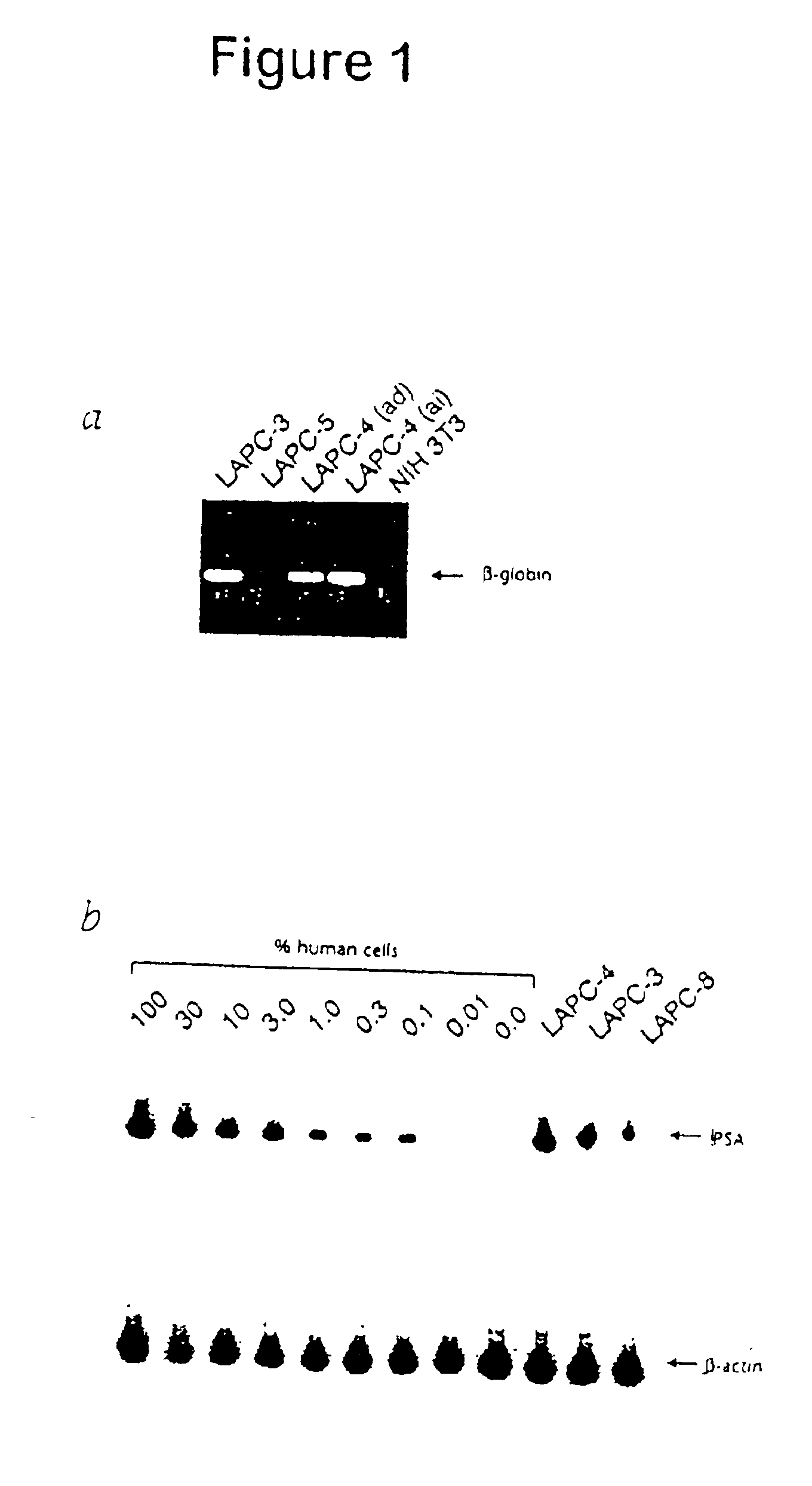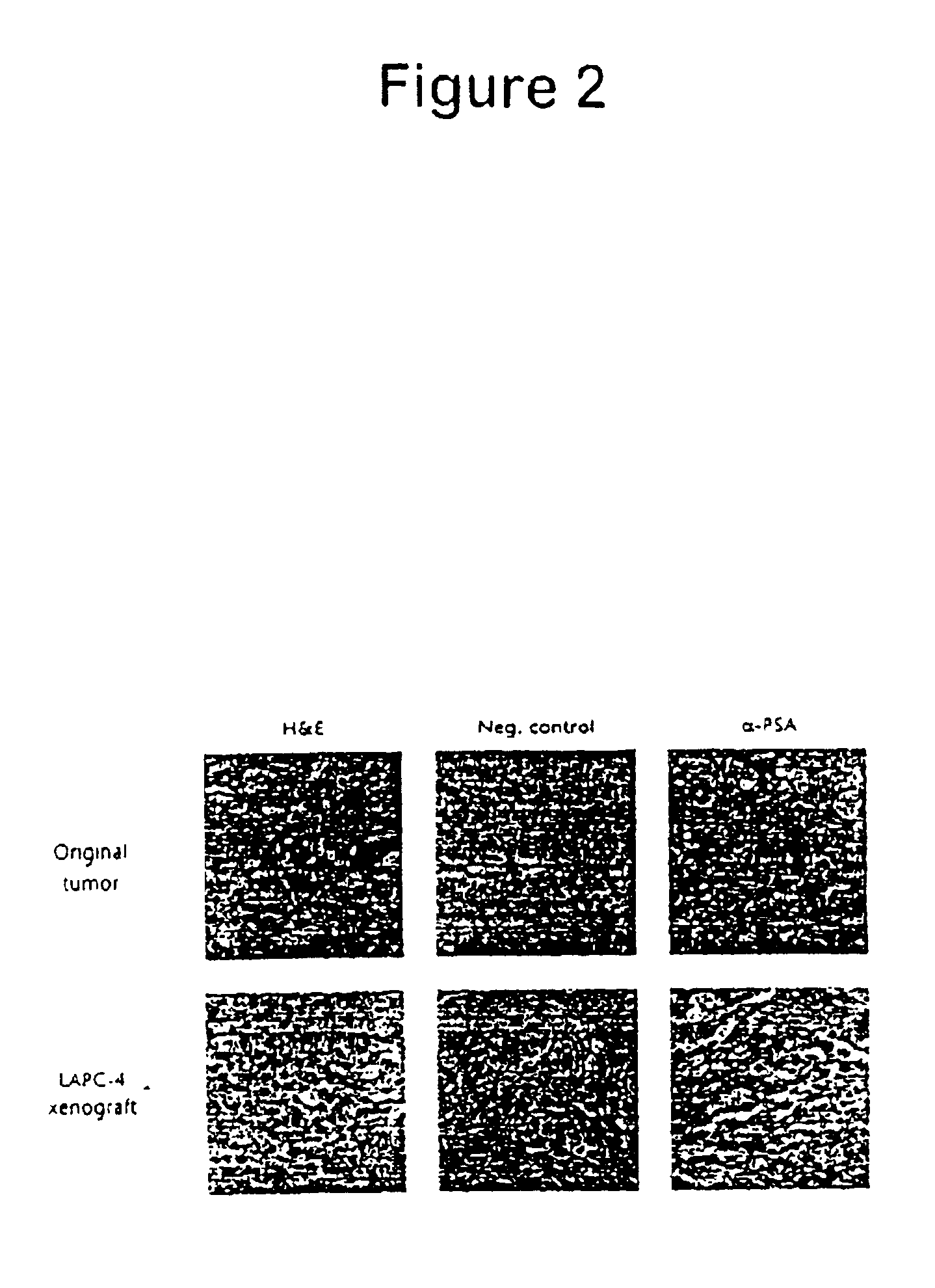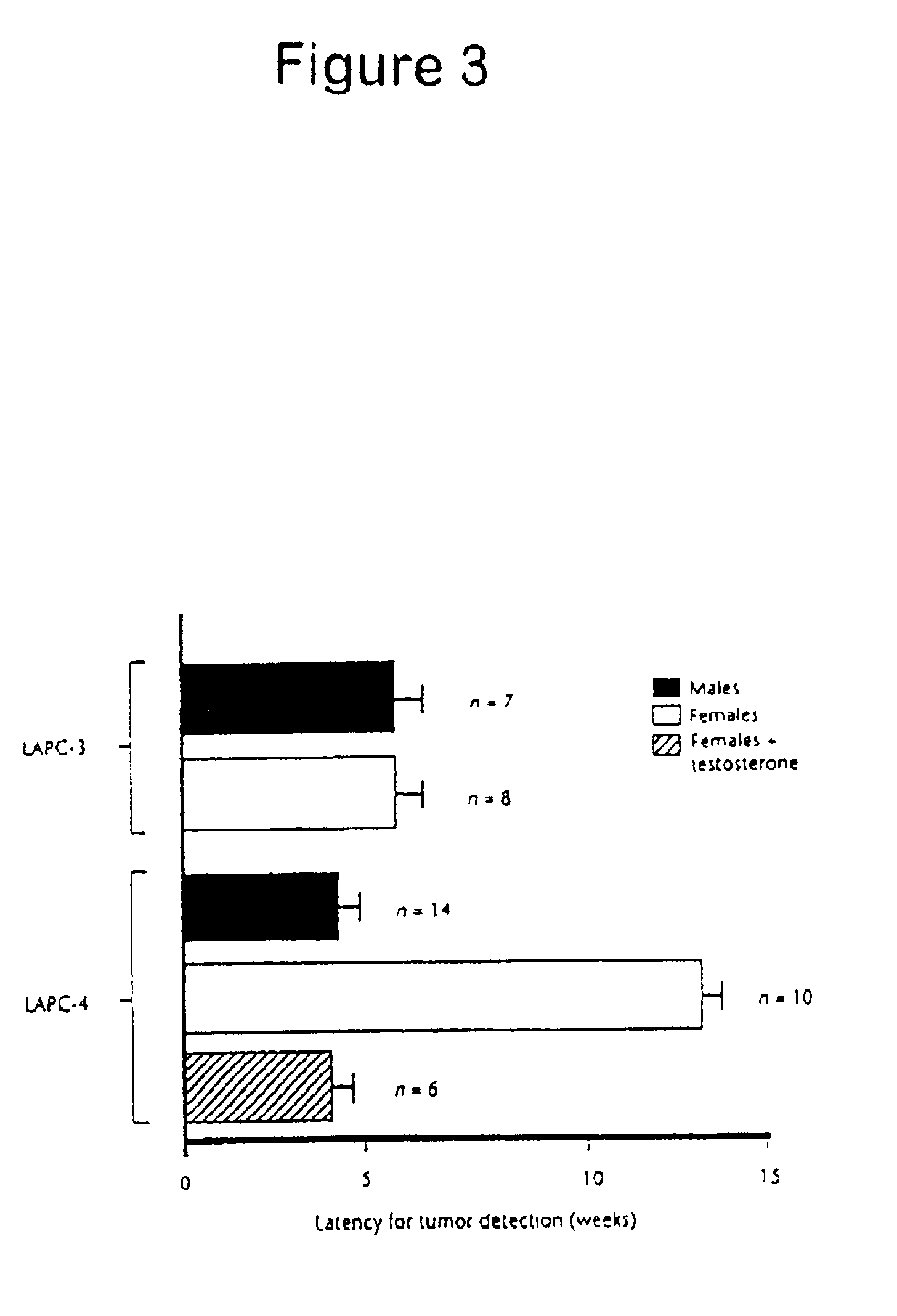Methods of assessing the effect of a gene of interest on human prostate cancer progression
a technology of human prostate cancer and gene of interest, which is applied in the direction of instruments, biocide, genetic material ingredients, etc., can solve the problems of prostate cancer morbidity and mortality, disease progression and death, and difficult progress in this field
- Summary
- Abstract
- Description
- Claims
- Application Information
AI Technical Summary
Benefits of technology
Problems solved by technology
Method used
Image
Examples
example 1
Generation of Subcutaneous Human Prostate Cancer Xenografts that Simulate Prostate Cancer Progression
Materials and Methods
[0065]Patients: All clinical material was obtained from patients with locally advanced or metastatic (stage C or D) after obtaining informed consent according to an IRB approved protocol. Most patients had undergone some form of androgen ablation therapy (medical or surgical) and shown progressive disease at the time the tissue samples were obtained.
[0066]Animals: C.B.17 scid / scid (SCID) mice were bred at UCLA under sterile conditions as previously described (Aldrovandi et al., Nature 363:732-736 (1993)). Biopsy material obtained at the time of surgery was placed on ice and immediately transferred to the SCID mouse facility for implantation. A scalpel was used to mince the tissue into 2-3 mm3 sections which were then implanted subcutaneously into the flanks of SCID mice. Mice were anesthetized with methoxyflurane before implantation. Initial implants were perform...
example 2
Preparation of Single Cell Suspensions of Xenograft Cells
Materials and Methods
[0085]Single cell suspensions of subcutaneous LAPC-4 tumors were prepared as follows. After removing xenograft tissue from SCID mouse, tissue was minced into 1-2 mm3 sections while the tissue was bathed in 1X Iscoves medium, minced tissue was then centrifuged at 1.3 K rpm for 4 minutes, the supernatant was resuspended in 10 ml ice cold 1X Iscoves medium and centrifuged at 1.3 K rpm for 4 minutes. The pellet was then resuspended in 1X Iscoves with 0.1% pronase E and incubated for 18 minutes at room temperature with mild rocking agitation followed by incubation on ice for 2-4 minutes. The mixture was then filtered using a 200 μm nylon mesh filer. Filtrate was centrifuged at 1.3 K rmp for 4 minutes, and the pronase was removed from the aspirated pellet by resuspending in 10 ml Iscoves and re-centrifuging. Resulting pellets were resuspended in PrEGM pre-incubated at 37 degrees C. Cell counts were determined, a...
example 3
Simulation of Progression to Micrometastasis in SCID Mice Bearing Subcutaneous Tumors
Materials and Methods
[0087]The LAPC-4 xenograft was used in this study. This xenograft was derived from a lymph node containing metastatic prostate cancer cells, and 100% of male mice inoculated subcutaneously with LAPC-4 cells develop localized tumors after 4-6 weeks without evidence of bony metastasis. The presence of micrometastasis in SCID mice implanted with LAPC-4 tumors was determined by analyzing the peripheral blood for prostate cancer cells using RT-PCR assays for PSA mRNA. Simultaneous RNA-PCR studies using β-actin primers demonstrated equivalent RNA loading. To confirm that positive PSA mRNA signals were not due to contamination with tumor cells during the necropsy procedure of during the preparation of RNA, samples were simultaneously prepared from a control mouse that was not implanted with a xenograft. No PSA expression was detected in control mice, even after prolonged autoradiograph...
PUM
| Property | Measurement | Unit |
|---|---|---|
| time | aaaaa | aaaaa |
| time | aaaaa | aaaaa |
| transrectal ultrasound guided biopsies | aaaaa | aaaaa |
Abstract
Description
Claims
Application Information
 Login to View More
Login to View More - R&D
- Intellectual Property
- Life Sciences
- Materials
- Tech Scout
- Unparalleled Data Quality
- Higher Quality Content
- 60% Fewer Hallucinations
Browse by: Latest US Patents, China's latest patents, Technical Efficacy Thesaurus, Application Domain, Technology Topic, Popular Technical Reports.
© 2025 PatSnap. All rights reserved.Legal|Privacy policy|Modern Slavery Act Transparency Statement|Sitemap|About US| Contact US: help@patsnap.com



